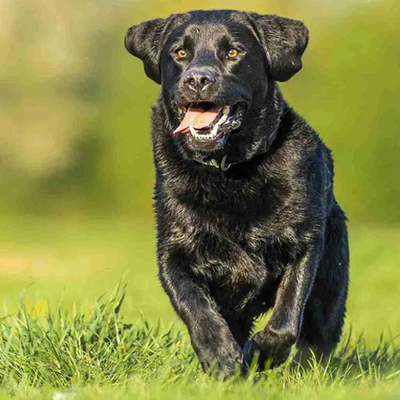Advanced Canine and Feline Behavior & Mental Wellness
Science-Backed Strategies for Today’s Pet Parents
When today’s pet parents talk about “wellness,” they’re no longer just referring to high-quality food or routine vet visits. They’re thinking deeper—seeking specialized, science-backed solutions that nurture the emotional, cognitive, and behavioral health of their cats and dogs. From rescue pets healing from trauma to busy urban animals needing more stimulating lifestyles, mental wellness is becoming as essential as physical care.
At LibertyPaw, every product, recommendation, and resource centers on one guiding belief: a mentally balanced pet is a happier, healthier companion. In this guide, we explore advanced, research-informed strategies you can implement at home—including trauma rehabilitation, CBT-style behavior modification, and high-value enrichment using American-made LibertyPaw toys built for daily mental workouts.
Understanding Pet Mental Wellness: Why It Matters More Than Ever

Both dogs and cats experience stress, trauma, frustration, boredom, and emotional dysregulation. And just like humans, they thrive when provided with predictable routines, confidence-building activities, and outlets for natural behaviors.
The Rise of Specialized Behavior Care
Pet parents are shifting toward:
- Deeper emotional understanding of their animals
- Proactive behavior management
- Preventative wellness beyond simple training
- Evidence-based behavior modification strategies
The result? More households are embracing advanced care such as trauma rehabilitation and cognitive behavioral therapy techniques—previously reserved for professional behaviorists.
Post-Trauma & Rehabilitation for Rescue Pets
Adopting a rescue pet is one of the most rewarding experiences imaginable, but many dogs and cats arrive with emotional wounds. These may include:
- Severe noise fears
- Resource guarding
- Shut-down or avoidant behavior
- Hypervigilance
- Reactivity
- Separation anxiety
- Startle responses
- Lack of trust or handling tolerance
Addressing trauma isn’t about “quick fixes.” It’s about slow, structured healing rooted in science, compassion, and predictability. When your dog needs something to help it relax, LibertyPaw Canine Calm, made in America in a GMP facility is a great choice.
A Multi-Step Trauma Rehabilitation Protocol (For Dogs & Cats)
Step 1: Establish a Secure Base
Animals recovering from trauma need an environment that feels predictable and safe.
- Provide a quiet retreat area or crate with blankets and dim lighting
- Maintain consistent feeding and walking schedules
- Limit overwhelming stimuli
- Use calm, low-pressure interactions
Creating safety lays the groundwork for learning and trust.
Step 2: Use LibertyPaw Enrichment Toys to Reduce Cortisol Naturally
Hands-on object engagement helps regulate anxious pets. Use LibertyPaw American-made toys—built to withstand chewing, tugging, and puzzle-style enrichment. These durable toys:
- Encourage self-directed play
- Redirect nervous energy
- Build confidence
- Provide chewing and problem-solving outlets
For traumatized pets, enrichment isn’t recreation—it’s therapy.
Step 3: Trigger Mapping & Threshold Identification
Behaviorists emphasize understanding where the fear begins.
- Identify subtle signs of fear
- Note exact triggers
- Determine thresholds—where the pet shifts from observing to panicking
This map becomes your guide to safe exposure work.
Step 4: Desensitization and Counterconditioning
Use slow, structured exposure paired with high-value rewards.
Example for noise phobias:
- Play a sound at extremely low volume
- Reward calm responses
- Very gradually increase intensity
- Use LibertyPaw toys or chews to create positive associations
Example for resource guarding:
- Start at a distance where the pet is relaxed
- Toss treats from far away
- Slowly decrease distance over time
- Never punish guarding—it increases fear
Step 5: Build Trust Through Choice-Based Living
Give your pet choices whenever possible:
- Allow them to initiate affection
- Offer multiple sleeping areas
- Provide several toy options
- Let them disengage during training
Choice builds confidence. Confidence builds recovery.
Step 6: Monitor Progress and Adjust
Trauma recovery isn’t linear. Bad days are normal. Track improvements like:
- Softer body language
- More exploration
- Increase in playfulness
- Faster recovery after triggers
If regression is severe, consult a certified behaviorist.
Check out 'From Stressed to Serene: 7 Scenarios Where Calming Supplements Made in America Save the Day' for more tips on helping calm your dog.
Cognitive Behavioral Therapy (CBT) for Dogs and Cats
CBT for animals—more accurately called cognitive and behavior modification—uses the same principles as human CBT:
- Identify maladaptive responses
- Change the emotional association
- Replace the behavior with a healthier alternative
These methods go beyond traditional training by addressing why the behavior exists—not just interrupting it.
Why CBT Works for Pets
CBT focuses on:
- Emotional regulation
- Cognitive reframing of stressors
- Teaching alternative behaviors
- Improving resilience
- Reducing conditioned fear responses
CBT Techniques Pet Parents Can Use Safely
Pattern Interrupts
Used to break repetitive or compulsive behaviors.
Example: A dog pacing repeatedly—interrupt gently with a toy toss, redirect to a LibertyPaw tug toy, and reward calm behavior.
Behavior Replacement
Teach a new behavior incompatible with the unwanted one.
- Barking at windows → “Go to mat” cue
- Cat scratching furniture → Rewarded scratching post use
Emotional Counterconditioning
Pair stressful situations with positive outcomes:
- Nail trims → Treats + LibertyPaw chew time
- Visitors → Scatter feeding
- Leash reactivity → Distance + rewards
Reinforced Calm Behavior
Reward moments your pet self-soothes or stays composed:
- Quiet lying down
- Soft cat blinking
- Relaxed posture
Enrichment for the Urban Pet: Thriving in Small Spaces
Urban pets—especially those in apartments or high-rise buildings—need creative ways to meet their mental and physical needs. Whether you live with a high-energy dog or a curious cat, the right enrichment prevents anxiety, destructive behavior, and boredom-driven restlessness.
Vertical Space: A Game Changer for Dogs & Cats
When floor space is limited, think up.
- Cat wall shelves
- Multi-level perches
- Window hammocks
- Dog-safe climbing steps
Scent Work: Low-Impact, High-Brain Engagement
Scent work stimulates the brain without requiring much space.
- Hide LibertyPaw toys around the home
- Use snuffle mats for foraging
- Create simple “find it” games
Low-Impact Exercise for Indoor Wellness
For Dogs:
- Slow sniff walks in hallways or courtyards
- LibertyPaw tug toy play
- Indoor fetch with soft toys
- Obedience drills mixed with play
For Cats:
- Feather wand play
- Treat puzzle toys
- Low-height obstacle courses
- LibertyPaw fabric or rope toys for hunting instincts
LibertyPaw Toys for Daily Mental Wellness
LibertyPaw’s American-made toys are designed for durability, enrichment, and natural behavior support. They are ideal tools for:
- Trauma recovery
- Boredom
- Confidence building
- Stress reduction
- Urban lifestyle enrichment
- Daily play routines
Final Thoughts: A New Era of Pet Mental Wellness
As the science of animal behavior advances, so does our responsibility as pet parents. By combining trauma-informed rehabilitation, CBT-based strategies, and thoughtful enrichment—even in small spaces—you can transform your dog or cat’s emotional wellbeing.
With the right tools, patience, and a commitment to their psychological health, every pet can become calmer, more confident, and more connected to the family they love.
Shop LibertyPaw Wellness Essentials
Support your pet’s emotional and behavioral balance with LibertyPaw’s American-made toys and premium dog supplements.












0 comments